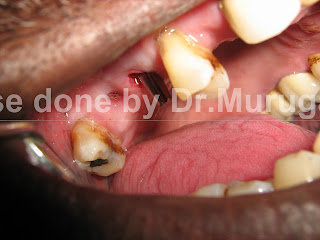Flapless or incision less or minimally invasive in combination with dental
implants.
- Current literature with regard to the efficacy and effectiveness of flapless surgery for endosseous dental implants is quite favouring.
- The available data on flapless technique indicate high implant survival overall(approximately 98.6%)
- In the late 1970s, Brånemark established the use of extensive surgical flaps to visualize the surgical field during implant surgery.
- However,flap elevation is always associated with some degree of morbidity and discomfort, and requires suturing to close the surgical wound.
- Surgeons use either rotary instruments or a tissue punch to perforate the gingival tissues to gain access to bone.
Flapless surgery has several potential advantages,
including
(1) Reduction of complications at the patient level, ie, swelling and pain,
(2) Reduction of intraoperative bleeding,
(3) Reduction of surgical time and need for suturing,
(4) Preservation of soft and hard tissues, and
(5) Maintenance of blood supply.
Despite these advantages, the flapless technique also has several shortcomings.
These may include
(1) The inability of the surgeon to visualize anatomical landmarks and vital structures,
(2) An inability to ideally visualize the vertical endpoint of the implant placement (too shallow/too deep),
(3) Decreased access to the bony contours for alveoloplasty .
Pre Operative
Occlusal View
Intra Operative -Minimal /No Bleeding
After Implant Placement
Occlusal View
Temporarization
Significant reduction in immediate postoperative discomfort, duration of discomfort, facial edema, and the use of analgesics when flapless surgery was performed flapless surgery may have benefits in decreasing patient discomfort in the immediate postoperative period.
Visit Us On :
http://www.acdeimplants.org/
For Implant course mail us on: acdechennai@gmail.com
For Implant Treatment :dr_mrgvl@yahoo.co.in





















































